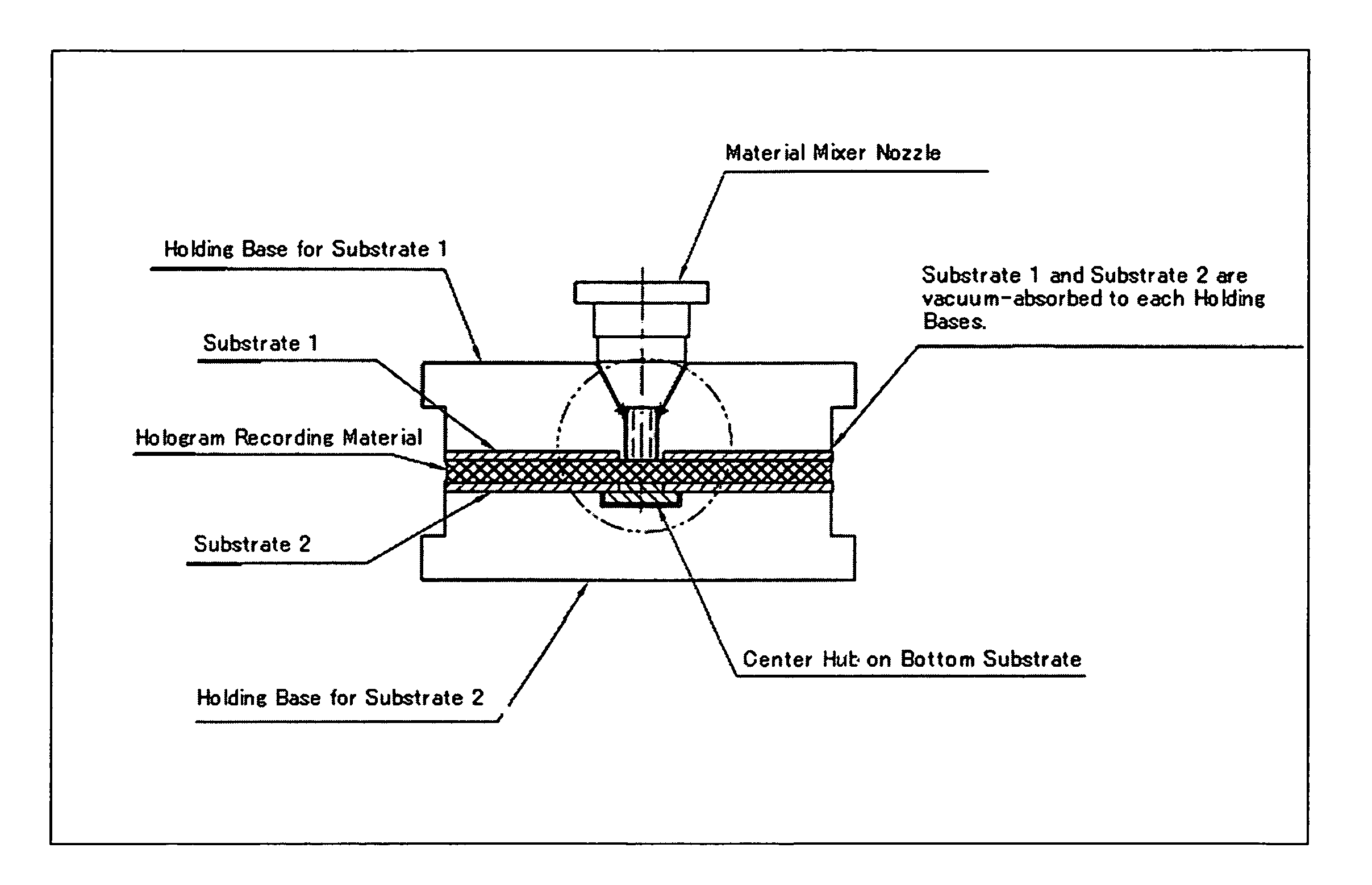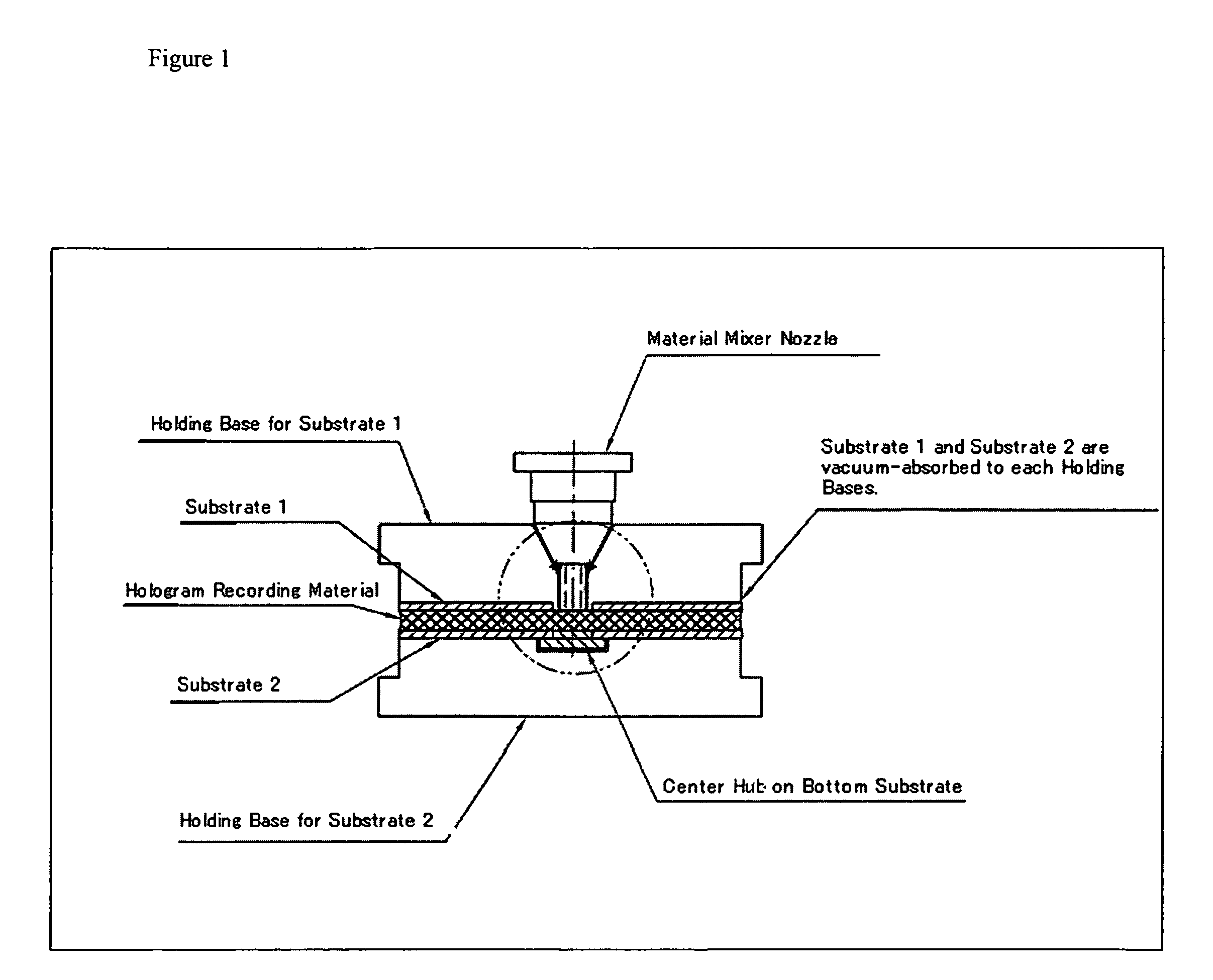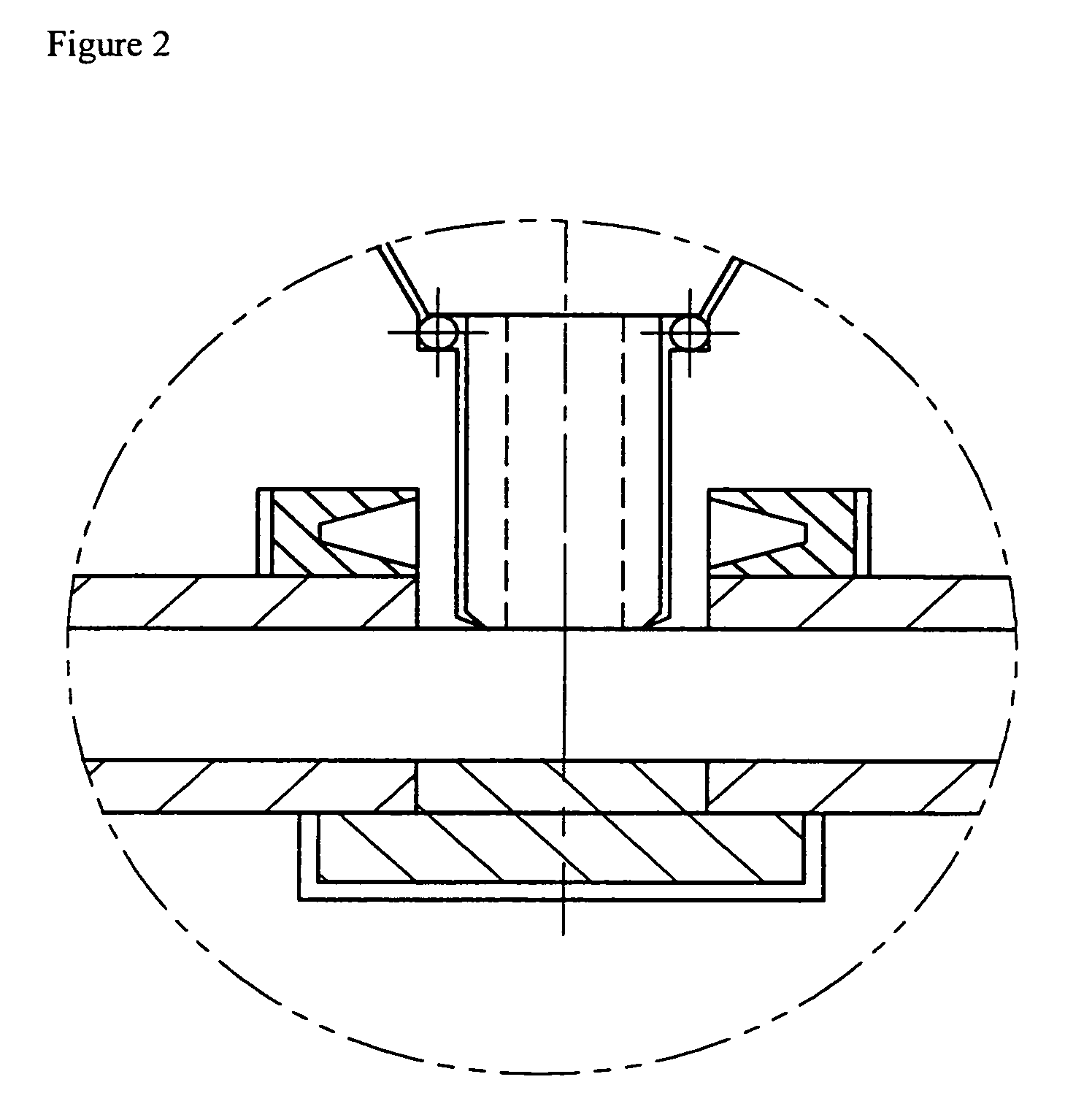Holographic recording medium and method of making it
a technology of holographic recording medium and manufacturing method, which is applied in the direction of photosensitive materials, instruments, photomechanical equipment, etc., can solve the problems of destructive read-out, poor sensitivity, and limited capacity of holographic storage system, and achieve high m/#, good uniformity in quality, and high sensitivity
- Summary
- Abstract
- Description
- Claims
- Application Information
AI Technical Summary
Benefits of technology
Problems solved by technology
Method used
Image
Examples
example 1
High Viscosity and Fast Cure at Room Temperature
[0091]Samples of Example 1 were prepared and evaluated in accordance with the procedures of Comparative Example except using the following ingredients to illustrates the performance characteristics of a precursor material having fast cure at room temperature.
[0092]
Liquid A, from Tank ADesmodur N3200100.00gmTribromophenylacrylate12.11gmBHT168mgViscosity@25° C., cps1350Liquid B, from Tank BK-FLEX XM-A307221gmt-Butylhydroperoxide310μlIrgacure 7842.522gmDibutyltindilaurate10.2gmViscosity@25° C., cps5400Fabricate the articlesAmount metered out of Liquid A, Tank A7.47gmAmount metered out of Liquid B, Tank B15.53gmViscosity @25° C. of the mixture of liquids A & B3750Time taken to mix in the dynamic mixing chamber0.5minViscosity of the mixture when dispensed out of the12,400cpschamberTime taken for the mixture to begin setting up3min.Fabrication completed10min.Shrinkage0.1%Dynamic range, M / # / 200 μm2.24Sensitivity, seconds to write 80% of the s...
example 2
High Viscosity and Fast Cure, Applied at 40° C.
[0093]Samples of Example 2 were prepared and evaluated in accordance with the procedures of Comparative Example except using the following ingredients to illustrates the performance characteristics of a precursor material having fast cure at 40° C.
[0094]
Liquid A, from Tank ADesmodur N320080.00gmTribromophenylacrylate9.2gmBHT162mgViscosity@25° C., cps1350Liquid B, from Tank BRucoflex S1028-210118.01gmRucoflex S1021-7088.4gmt-Butylhydroperoxide1.94gmIrgacure 7842.522gmDibutyltindilaurate10.2gmViscosity@60° C., cps780Fabricate the articlesAmount metered out of Liquid A, Tank A7.47gmAmount metered out of Liquid B, Tank B15.53gmViscosity @40° C. of the mixture of liquids A & B8700cpsTime taken to mix in the dynamic mixing chamber12secViscosity of the mixture when dispensed out of the38,200cpschamberTime taken for the mixture to begin setting up1.5min.Fabrication completed5min.Shrinkage0.1%Dynamic range, M / # / 200 μm2.35Sensitivity, seconds to ...
PUM
| Property | Measurement | Unit |
|---|---|---|
| thickness | aaaaa | aaaaa |
| temperature | aaaaa | aaaaa |
| shrinkage | aaaaa | aaaaa |
Abstract
Description
Claims
Application Information
 Login to View More
Login to View More - R&D
- Intellectual Property
- Life Sciences
- Materials
- Tech Scout
- Unparalleled Data Quality
- Higher Quality Content
- 60% Fewer Hallucinations
Browse by: Latest US Patents, China's latest patents, Technical Efficacy Thesaurus, Application Domain, Technology Topic, Popular Technical Reports.
© 2025 PatSnap. All rights reserved.Legal|Privacy policy|Modern Slavery Act Transparency Statement|Sitemap|About US| Contact US: help@patsnap.com



